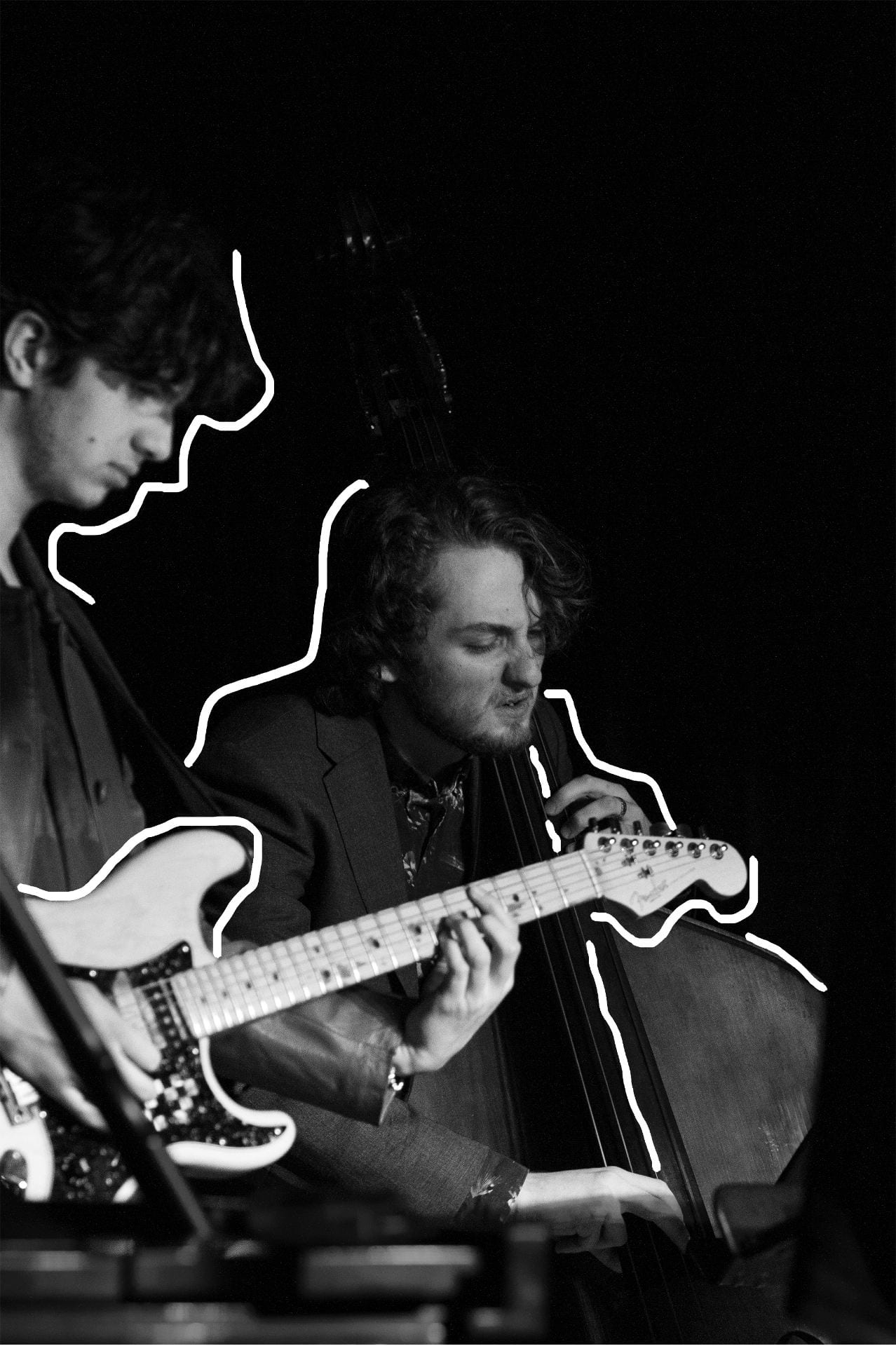My studio pieces this semester revolved around the blues and the untold stories of resistance and expression that have been actively flattened and how the adaptation of the blues lineage and form is a resistance response to a nation that constantly seeks to de-value these artist’s existence.
As I researched in Seminar, I began thinking about the instruments we use and how little creative control we have over the tools that enable our expression. It was deeply moving to study the technical development in the blues form because those musicians created their own musical vernacular that was staunchly original, yet its ingenuity goes often ignored. An especially interesting moment in jazz history that I researched was when a musician from the 50’s named Ornette Coleman made a composition using intentionally cheap and low quality instruments to allude to the blues musicians that came before him, while also providing social commentary on the historical disenfranchisement of black musicians.
“Commercially viable jazz of the time had blistering beats per minute (bpm) and deeply intricate solos. Coleman intentionally veered back into the blues vernacular with bending pitches and poorly crafted instruments. he calls on this vernacular by bending notes like the early blues guitarists would use knives to bend the pitches of their strings. Instruments were prohibitively expensive. Even if they could afford it, racist white store owners wouldn’t sell them instruments. Coleman is speaking directly to the historical lack of resources for black musicians. The combination of his band’s wailing tone and plastic instruments evoke a feeling of remembrance for performers that struggled before Coleman. He actively reclaims these elements to empower his contemporary voice”.
Early sketches and Mind Map
First, I wanted to create a composition that reflects contemporary, local jazz musicians that I think are important voices in the nyc scene. I wanted to make a sprawling track that delineates the blues tradition through more contemporary forms like ambient jazz and hip hop. I was excited to include my friend Sebastian Alexander Johnson (vibraphone) while I played with trombone, synths, drum machine programming and sounds from the guitar I made.
The guitar was created using only scrap woods for both creative control, lowering costs and pointing towards the lack of resources for deprived black blues musicians that created an entire new vernacular.
As I worked with this new instrument, I realized the best sound that it could make was mimicking the early blues sound of bending notes with a spoon or knife. This is how most blues musicians performed in the early stages of its creation and the sound is still effective today.
The cyanotype was an experiment with both the metaphor of veiled narratives in the blues tradition and the actual medium on canvas and fabrics. This dark blue printing ink keeps in tune with the color palette that I’ve relied on most of the semester.It proved to be much more difficult than I thought it would be. Through a few experiments, I found the image especially difficult to transfer. However, other interesting creations came from experimenting with the dirty transparent negatives that I printed out and repurposed. I scanned multiple layers of the transparencies together and re-inverted them in photoshop, creating a piece that was equal parts digital and physical manipulation.
I hope to make more instruments and experiment with more stringed instruments especially. I didn’t know the cost of a project like this but ended up only spending 20 dollars including strings. I already am noticing room for growth, but continuing down this path of making instruments could provide me with clear markers of progress that I would really like to see.
In alternative photography techniques, there is so much more room to learn. I knew only surface level knowledge about the process before diving in and I’m still happy with the final results, but I want to learn technically how to succeed in making a cleaner print and begin using different chemical processes.
I wish I could have included the final layered scans in the final review, but I didn’t think to try that until after. Overall, I’m happy with how my pieces all surround a cohesive feeling and statement about how I perceive the resistant nature of the blues lineage while providing my own documentation and creations.

















